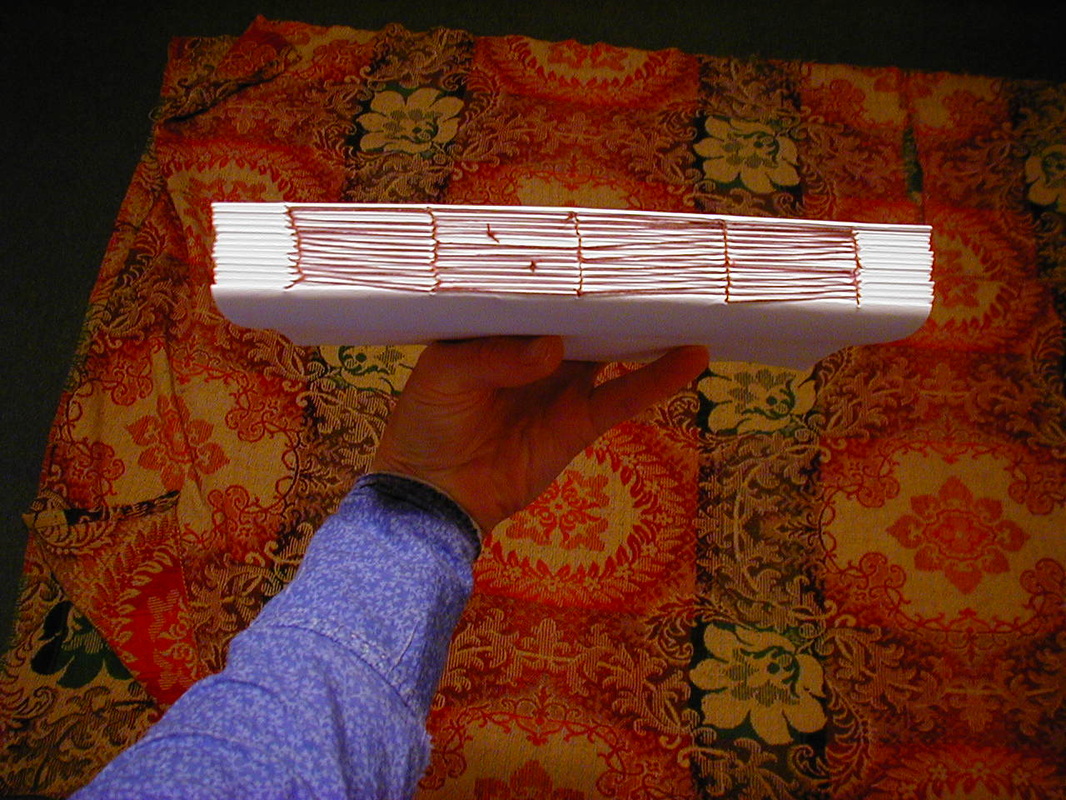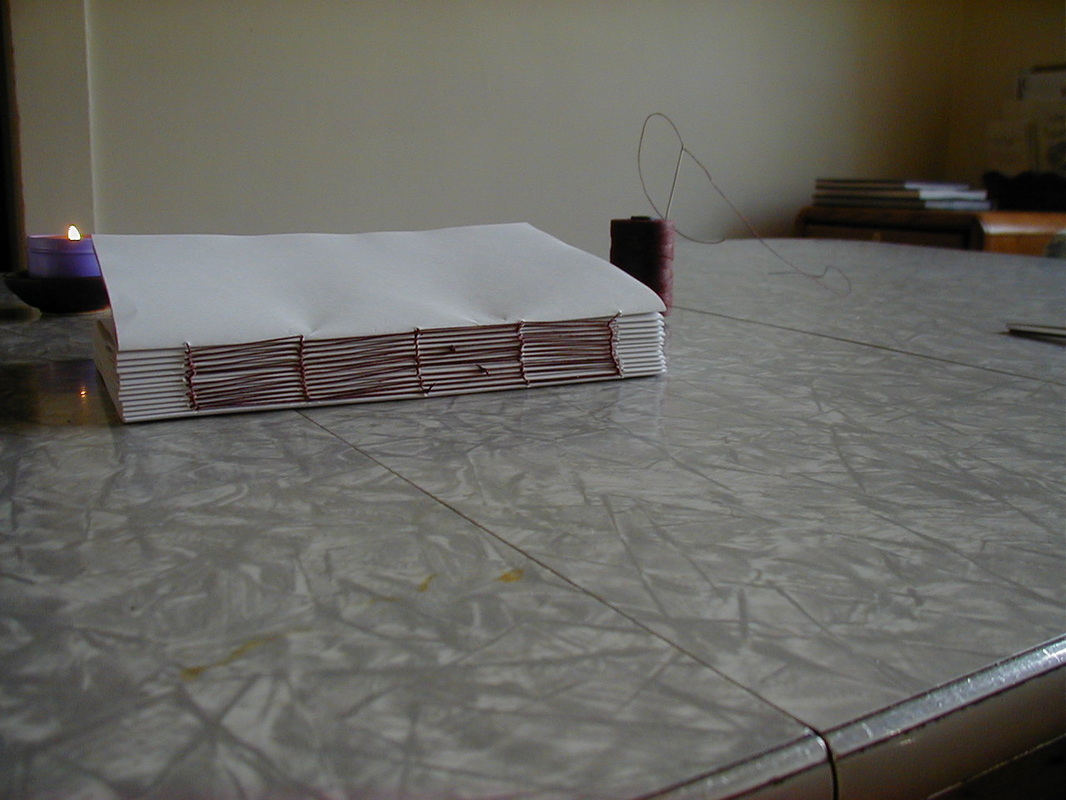|
After all the pages in the manuscript have been folded, creased, and nested into signatures, line up a hole-guide in the center of each signature. Punch evenly-spaced holes in the signatures. (The bookbinding thread will later run through these holes.) Attempt to thread the bookbinding needle. (A special Irish linen thread is used for bookbinding. It is much stronger than anything used in normal sewing.) Curse at the unknown person who decided bookbinding thread should be larger than the eyes of bookbinding needles. Eventually get the *#!@* thread into the needle. Sew the signatures together, using a combination of something not far off from an embroidery stitch, and a variety of knots I otherwise hadn't seen since getting my knot-tying merit badge in Camp Fire in fifth grade. (This is technically called a “kettle stitch,” and instructions for it may be found elsewhere online.) Curse at the thread which keeps wanting to tangle. Curse at the signatures which don't want to stay together. Finish sewing the signatures together. Once the signatures are together, they are known as a "text-block". Hurray! It's basically a book now, sans cover. Time to make the cover (known in bookbinding as the "case.") Tune in next time for the exciting adventure of case-making! Comments are closed.
|
Archives
June 2024
Categories |
***



 RSS Feed
RSS Feed